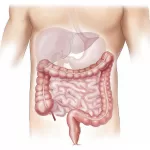In the pursuit of optimal health, it’s common to rely on familiar metrics like body mass index (BMI). However, recent insights from health experts suggest that another measurement—body fat percentage—might offer a more accurate assessment of overall health status.
BMI, a measure of weight relative to height, has long been used as a quick indicator of health. However, its limitations have become increasingly apparent, particularly for individuals with higher muscle mass, such as athletes, who may register as overweight despite being in excellent health.
“BMI is a starting point, but it doesn’t tell the whole story,” explains Claire Edgemon, RD, a senior registered dietitian at Baylor College of Medicine. “Body fat percentage provides additional information that can help paint a clearer picture of a person’s health status.”
Unlike BMI, which only considers weight and height, body fat percentage reflects the proportion of weight that comes from fat tissue. This measurement offers valuable insight into overall health and disease risk.
In a recent study published in The Lancet, researchers found that body fat percentage could significantly improve outcomes for colorectal cancer, highlighting the importance of this metric in disease prevention and management.
“While BMI remains a useful tool, it’s important to recognize its limitations,” says Daniel Fulham O’Neill, MD, EdD, FAAOS, ABOS, a sports medicine doctor at The Alpine Clinic. “Factors like physical activity, stress levels, and sleep habits also play significant roles in overall health.”
Understanding the role of body fat percentage in health can guide individuals toward more informed decisions about their well-being. However, accurately measuring body fat percentage can be challenging.
“Gold-standard methods like DEXA scans and underwater weighing offer the most precise measurements, but they’re not always accessible,” notes Edgemon. “Alternative methods like skinfold measures and bioelectric impedance can provide useful estimates.”
Despite the challenges, experts emphasize the importance of monitoring trends in body fat percentage over time, rather than relying on a single measurement.
“Health is a journey, not a destination,” says O’Neill. “By prioritizing physical activity, maintaining a balanced diet, and monitoring key health metrics, individuals can take proactive steps toward optimal well-being.”
As the understanding of health metrics evolves, incorporating body fat percentage into routine health assessments could lead to more personalized and effective approaches to disease prevention and management.












